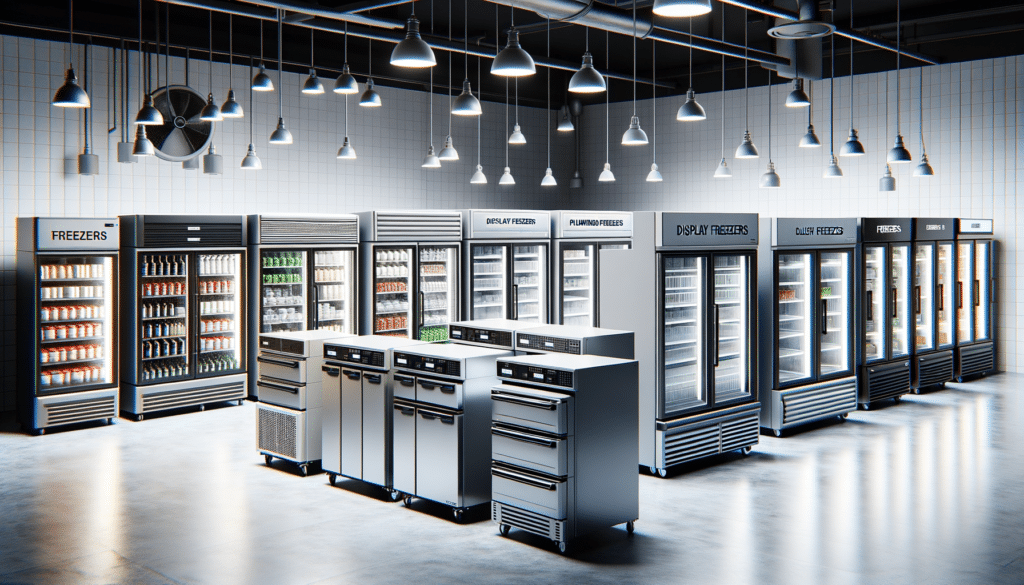Understanding Commercial Refrigerators
Commercial refrigerators are a cornerstone in the food and beverage industry, designed to handle the rigorous demands of restaurants, cafes, and supermarkets. Unlike domestic refrigerators, commercial units are built for durability and efficiency, often featuring robust materials and advanced cooling technologies. Their primary function is to maintain consistent temperatures, ensuring food safety and compliance with health regulations.
These refrigerators come in various sizes and configurations, from reach-in and walk-in models to under-counter and prep-table designs. The choice of model depends largely on the specific needs of the business. For instance, a bustling restaurant might opt for a spacious walk-in refrigerator to store bulk ingredients, while a small café might find an under-counter unit more practical.
Key features of commercial refrigerators include:
- Stainless steel construction for easy cleaning and longevity.
- High-efficiency compressors to reduce energy consumption.
- Adjustable shelving for versatile storage options.
- Advanced temperature controls to maintain optimal conditions.
Investing in a commercial refrigerator is not just about keeping food fresh; it’s about ensuring the smooth operation of a business. Choosing the right model can lead to significant cost savings in energy and reduce food wastage, making it a critical decision for any food service establishment.
The Versatility of Household Refrigerators
Household refrigerators are an essential appliance in modern homes, offering a convenient way to store perishable goods and leftovers. They come in a variety of styles, including top-freezer, bottom-freezer, side-by-side, and French door models, each catering to different preferences and space requirements.
Top-freezer models are often chosen for their simplicity and cost-effectiveness, making them a popular choice for budget-conscious consumers. Bottom-freezer units, on the other hand, provide easier access to fresh food items, as the refrigerator compartment is at eye level. French door models combine style with functionality, offering expansive storage and wide shelves ideal for large platters and trays.
Refrigerators today are equipped with numerous features that enhance their usability:
- Adjustable shelves and door bins for customizable storage.
- Humidity-controlled crispers to keep fruits and vegetables fresh.
- Energy-efficient designs to reduce electricity bills.
- Smart technology integration for remote monitoring and control.
When selecting a refrigerator, it’s important to consider factors such as kitchen layout, family size, and lifestyle needs. A well-chosen refrigerator can enhance kitchen efficiency, reduce food spoilage, and contribute to a more sustainable household by minimizing energy consumption.
Exploring the World of Freezers and Display Freezers
Freezers are indispensable for long-term food storage, preserving items at sub-zero temperatures to prevent spoilage and maintain nutritional value. They come in two primary types: chest freezers and upright freezers. Chest freezers offer more storage space and are generally more energy-efficient, while upright freezers provide easier organization with shelves and compartments.
Display freezers, commonly found in retail environments, serve a dual purpose: preserving products while showcasing them attractively to customers. These units are designed with glass doors and bright lighting to enhance product visibility, making them ideal for displaying ice creams, frozen meals, and other packaged goods.
Key considerations when choosing a freezer include:
- Capacity and size to suit storage needs and available space.
- Energy efficiency ratings to minimize operational costs.
- Defrosting options, such as manual or auto-defrost.
- Temperature control features for precise settings.
Both freezers and display freezers play a crucial role in food preservation and merchandising. For businesses, selecting the right type of freezer can impact sales and customer satisfaction, while for households, it ensures that food remains safe and fresh for extended periods.


